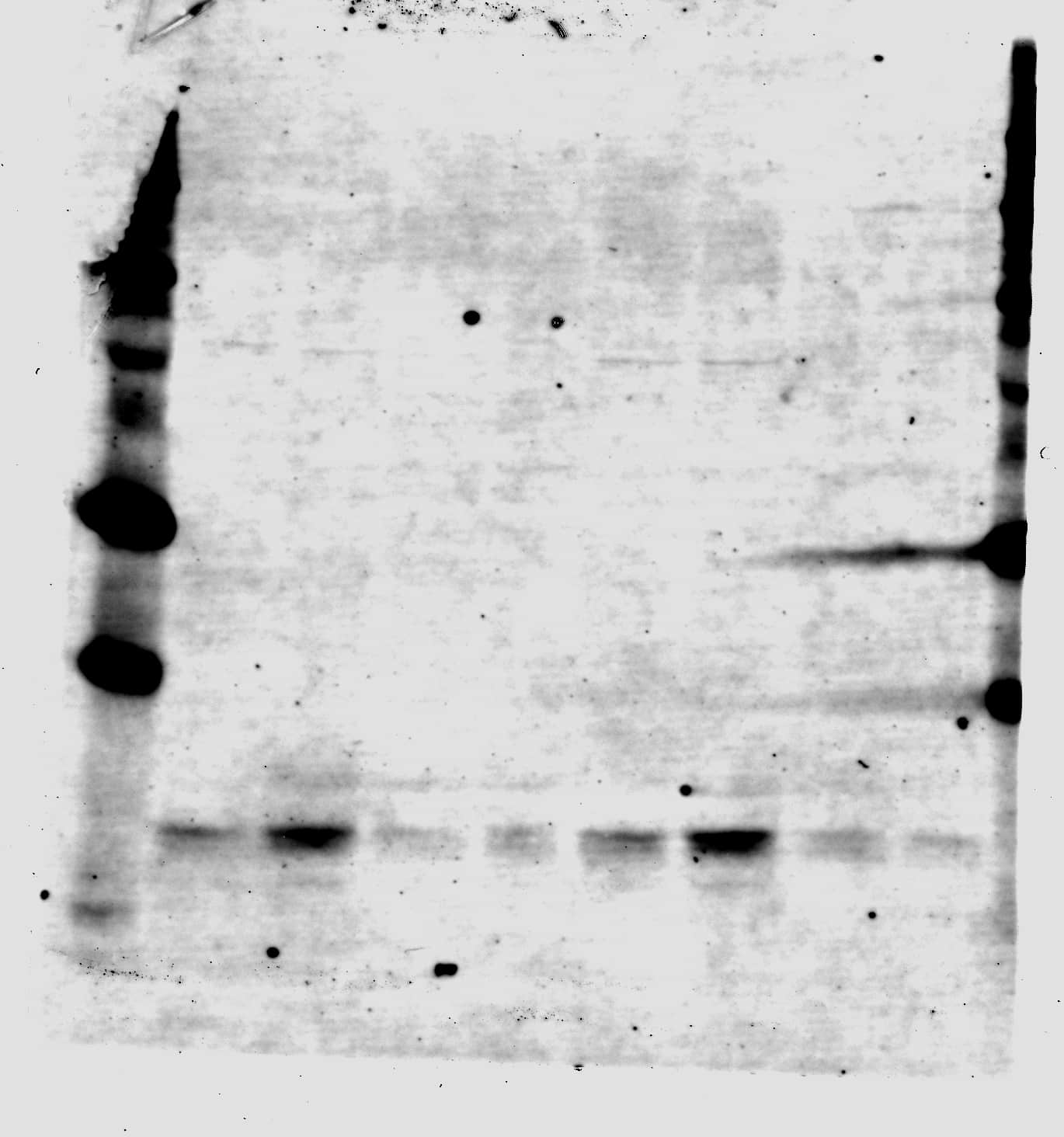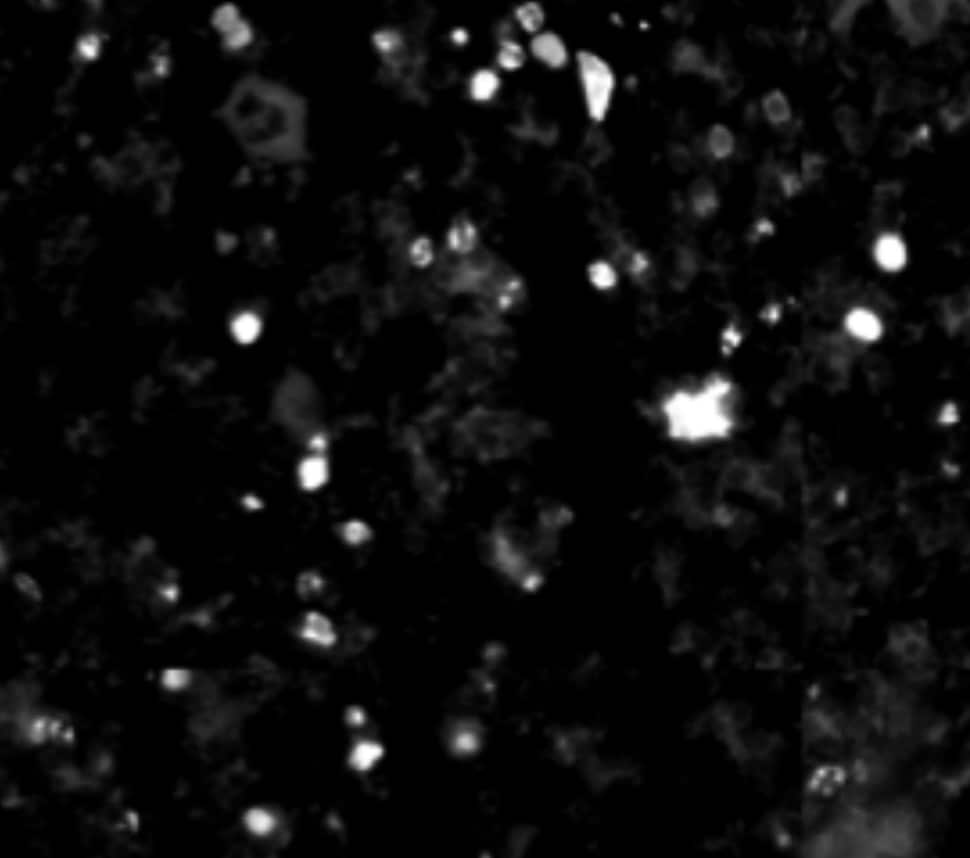| Reactivity | All-NASpecies Glossary |
| Applications | WB, Flow, ICC/IF, IHC, IP, KO, Single-Cell Western |
| Clone | 1C51 |
| Clonality | Monoclonal |
| Host | Mouse |
| Conjugate | Unconjugated |
| Format | BSA Free |
| Concentration | 1 mg/ml |
| Immunogen | This mCherry Antibody (1C51) was developed against recombinant full-length mCherry purified from E. coli. |
| Specificity | This mCherry Antibody (1C51) does not cross react with GFP. |
| Isotype | IgG2a |
| Clonality | Monoclonal |
| Host | Mouse |
| Purity | Protein G purified |
| Innovator's Reward | Test in a species/application not listed above to receive a full credit towards a future purchase. |
| Dilutions |
|
|
| Application Notes | Use in Flow reported in scientific literature (PMID:33335127). Use in IHC and IHC-P reported in scientific literature (PMID: 27396338 and 27716840 respectively). mCherry antibody validated for IHC-Frozen from a verified customer review. Use in Immunoprecipitation reported in scientific literature (PMID: 33008892). Use in Knockout Validation was reported in scientific literature (PMID: 32547960). |
|
| Theoretical MW | 27 kDa. Disclaimer note: The observed molecular weight of the protein may vary from the listed predicted molecular weight due to post translational modifications, post translation cleavages, relative charges, and other experimental factors. |
|
| Reviewed Applications |
|
|
| Publications |
|
| Storage | Store at 4C short term. Aliquot and store at -20C long term. Avoid freeze-thaw cycles. |
| Buffer | 50% PBS, 50% glycerol |
| Preservative | 0.035% Sodium Azide |
| Concentration | 1 mg/ml |
| Purity | Protein G purified |
| Images | Ratings | Applications | Species | Date | Details | ||||||||||
|---|---|---|---|---|---|---|---|---|---|---|---|---|---|---|---|

Enlarge |
reviewed by:
Verified Customer |
WB | Human | 04/19/2019 |
Summary
Comments
|
||||||||||

Enlarge |
reviewed by:
Verified Customer |
Immunofluorescence - fixed-frozen | Mouse | 10/21/2018 |
Summary
Comments
|
||||||||||
|
reviewed by:
Verified Customer |
WB | Human | 03/17/2017 |
Summary
|
Secondary Antibodies |
Isotype Controls |
Research Areas for mCherry Antibody (NBP1-96752)Find related products by research area.
|
|
Successful Transplantation of Friedreich Ataxia Induced Pluripotent Stem Cell (iPSC)-Derived Sensory Neurons in Dorsal Root Ganglia of Adult Rodents Jamshed Arslan, Pharm D, PhD The dorsal root ganglia (DRG) are a collection of cell bodies of sensory nerves carrying sensory information – including nociception, mechanoreception and proprioception – from periphera... Read full blog post. |
|
Autophagy and RAS signaling: Clinical implications By Christina Towers, PhD The cellular recycling process known as autophagy is currently being targeted in over 60 clinical trials focused on treating different types of cancer1. To date, the only autophagy-targeted ... Read full blog post. |
|
Read full blog post. |
|
Read full blog post. |
|
How to visualize autophagy by microscopy By Christina Towers, PhD Autophagy is a recycling process that relies on the formation of a unique organelle termed an autophagosome. An elegant way to monitor autophagy is through various microscopy techniques to... Read full blog post. |
|
Read full blog post. |
|
Animal Models to Study Autophagy By Christina Towers, PhD What is autophagy?Autophagy is the catabolic process that degrades cytoplasmic material via the lysosome. The process of macroautophagy was originally characterized in yeast, where the... Read full blog post. |
|
Application Focus: I see an increase in LC3, now what? By Christina Towers, PhD. Autophagy is highly conserved and tightly regulated process that all cell types use to recycle nutrients, particularly in the instance of stress1. As a result, even sm... Read full blog post. |
The concentration calculator allows you to quickly calculate the volume, mass or concentration of your vial. Simply enter your mass, volume, or concentration values for your reagent and the calculator will determine the rest.
5 | |
4 | |
3 | |
2 | |
1 |
| Verified Customer 04/19/2019 |
||
| Application: | WB | |
| Species: | Human |
| Verified Customer 10/21/2018 |
||
| Application: | Immunofluorescence - fixed-frozen | |
| Species: | Mouse |
| Verified Customer 03/17/2017 |
||
| Application: | WB | |
| Species: | Human |